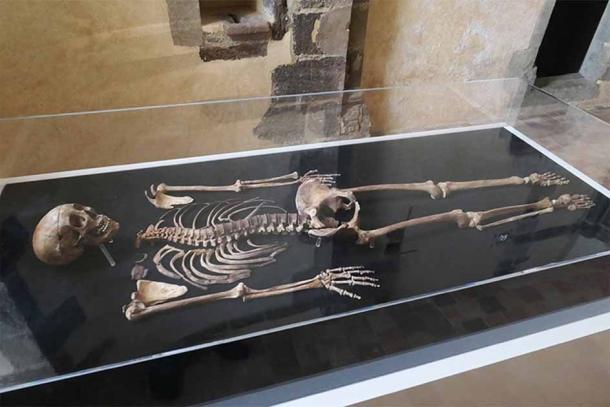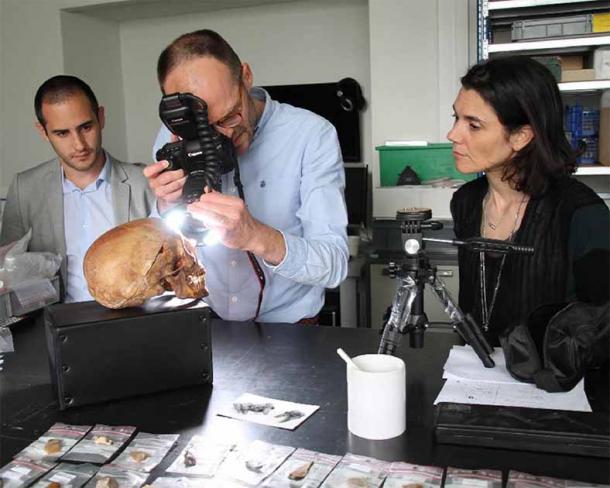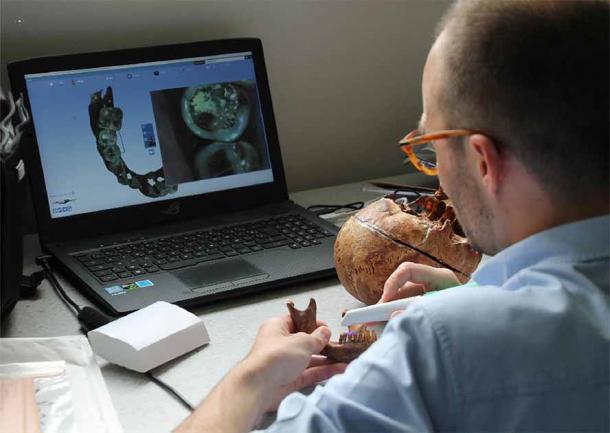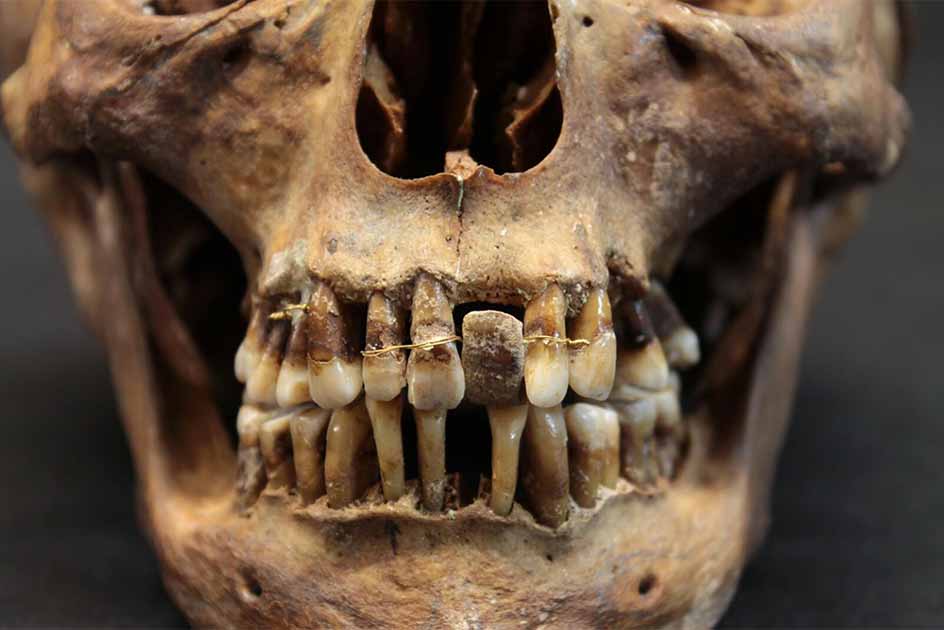Anne d’Alegre and Her Dirty Dental Secret
Like many LA celebrities today, serious dental work was carried out in 17th century France to protect the smiles of perceived social elites. This statement is based on new research into the well-preserved body, and mouth, of Anne d'Alegre, who was discovered in a lead coffin during a 1988 excavation at the Chateau de Laval, in northwestern France.
When this noble French woman was first exhumed, archaeologists noted a curious dental prosthetic, but no tools were available to research any further. But now, with more advanced scanning tools, a team of scientists has found that Anne d'Alegre used a contraption made of golden wire “to secure her teeth in place.”

The skeleton of Anne d’Alegre on display at the Chapel of the Old Castle of Laval in Mayenne, France. (Fab5669 / CC BY-SA 4.0)
A Stressful Life Story Revealed by Anne d'Alegre’s Teeth
Anne was a Huguenot protestant who in the 1500s had raised many swords against Catholics during the French Wars of Religion. By the age of 21, she was a widow with a young son, Guy XX de Laval, and during the Eighth War of Religion d'Alegre, she and her son hid from Catholic forces when their property was seized by the Crown of France.
Some 400 years after the French aristocrat’s death, and 35 years after the body of Anne d'Alegre was recovered by a team of archaeologists, a group of forensic dentists published a new study in the Journal of Archaeological Science: Reports. Looking at her childhood and upbringing it is of little wonder the authors of the new study said Anne’s teeth suggested she was “really stressed out.”

The odontology team taking photos of the Anne d’Alegre skull. (Rozenn Collator / Inrap)
Gold, the Last Resort of the Toothless
The body of Anne d'Alegre, who died in 1619, was embalmed in a lead coffin. This assured that her skeleton, including her teeth, was remarkably well-preserved. But without the advanced scanning tech which is available today the archaeologists who unearthed Anne's body had no idea what her prosthetic application did, or why she had it in the first place.
The team of scientists have now determined that Anne d'Alegre had suffered from periodontal disease, the long term effects of which include swelling of the gums and the loosening and loss of teeth. Because tooth loss changes the shape of one’s face, and alters the voice, the new study shows that to counter these effects Anne d'Alegre “used a gold wire to keep her teeth from falling out.”

The team of dentists scanned Anne d’Alegre’s skull to reveal the way gold wire was used to hold her teeth together. (Rozenn Collator / Inrap)
Anne d'Alegre Had a Mouthful of Disease, and Hippo Bone!
The study's authors said that because d'Alegre suffered from periodontal disease she was afflicted with loosening teeth. They argued that the use of gold wire went beyond “therapeutic care,” or even to aid with flirtation. In fact, the study highlights the “importance of the appearance for aristocratic women submitted to strong social constraints (like stress or widowhood).”
When the body was first recovered 35 five years ago, three dimensional “Cone Beam” scanners had not been invented yet. Nevertheless, the team made use of this modern technology to show how gold wire “held together and tightened” several of Anne’s jeopardized teeth.
In their paper, the team of scientists said the new research provides “the first demonstration of a link between a diagnosis and a therapy on an identified individual using new digital technologies used in modern dentistry.”
For details regarding dental care of Anne d'Alègre, the new pub. by @RozennColleter et al. is published today in Journal of Archaeological Science: Reports https://t.co/c990noFVwi@Inrap @CNRS_OccitaniE @INEE_CNRS @UT3PaulSabatier https://t.co/AXvj16jPva
— CAGToulouse (@CagToulouse) January 24, 2023
Pain Before Social Embarrassment for Anne d'Alegre
The scans also revealed that Anne d'Alegre had an artificial elephant ivory tooth, which a report in CBS News pointed out was “unusual.” At the time hippopotamus was far more popular.
While the dental surgeon might have had good intentions in prescribing the use of gold wire, it would have need to be repeatedly tightened. Over the years, the use of wires would have further destabilized Anne d'Alegre’s rotting neighboring teeth, the researchers wrote in the paper. Dentistry has definitely evolved over time.
Rozenn Colleter, an archaeologist at the French National Institute for Preventive Archaeological Research and lead author of the study, said that “the ornate dental work only made the situation worse.” But because Anne d'Alegre lived through a troubled time in French history, she seemed to have settled for pain rather than the social embarrassment of being an aristocratic woman with no teeth.
Top image: The Skull of Anne d’Alegre, countess of Laval (1565-1619) equipped with hippo bone dental prostheses and gold wire. Source: Rozenn Collator / Inrap
By Ashley Cowie



















